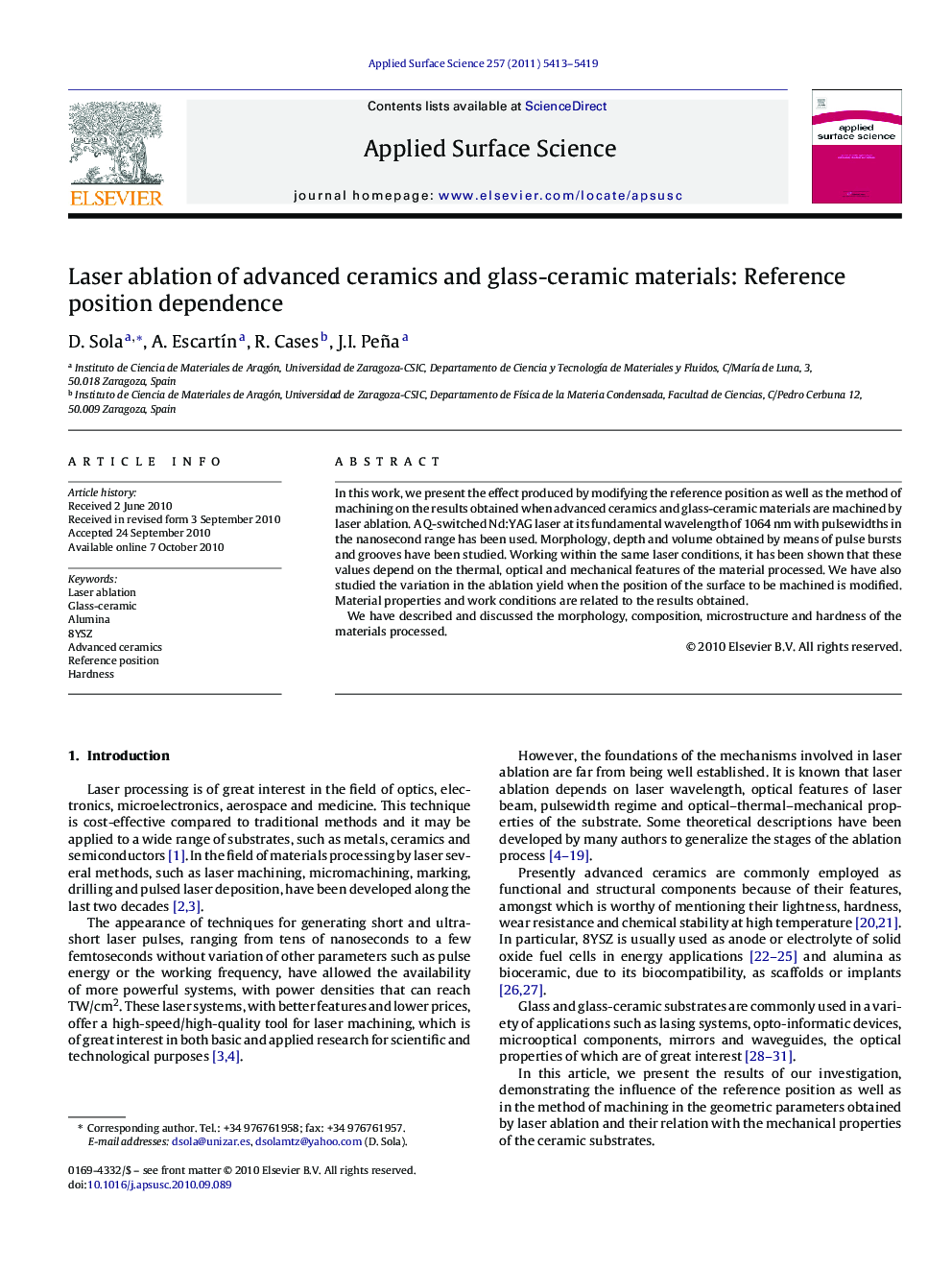| Article ID | Journal | Published Year | Pages | File Type |
|---|---|---|---|---|
| 5364393 | Applied Surface Science | 2011 | 7 Pages |
In this work, we present the effect produced by modifying the reference position as well as the method of machining on the results obtained when advanced ceramics and glass-ceramic materials are machined by laser ablation. A Q-switched Nd:YAG laser at its fundamental wavelength of 1064Â nm with pulsewidths in the nanosecond range has been used. Morphology, depth and volume obtained by means of pulse bursts and grooves have been studied. Working within the same laser conditions, it has been shown that these values depend on the thermal, optical and mechanical features of the material processed. We have also studied the variation in the ablation yield when the position of the surface to be machined is modified. Material properties and work conditions are related to the results obtained.We have described and discussed the morphology, composition, microstructure and hardness of the materials processed.
